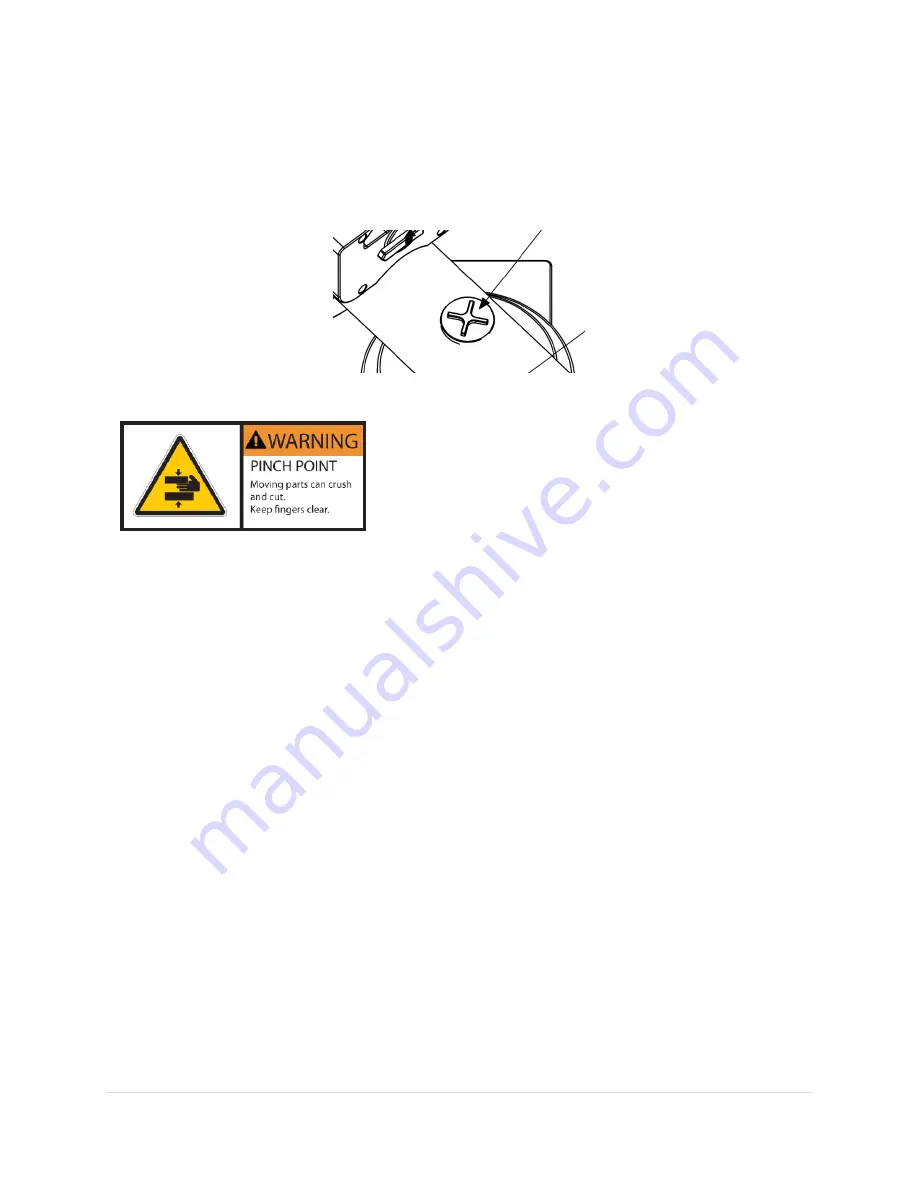
Paramount User Guide
89
|
P a g e
declination axis until the through holes in the internal shaft allow incoming light to pass through the
mount.
Early models of the Paramount MX used a circular aluminum nut instead of a curved plate to cover the
declination axis access hole, as shown in Figure 48.
Figure 48: The original Paramount MX cable conduit access cover.
Always keep fingers clear from the cable conduit access
hole!
While the declination axis rotates during mount
slews, an internal shaft in the declination assembly is
also being rotated by a very high torque servomotor.
When the declination axis’ Three Position Switch is in
the Balance Position (page 73), the internal shaft can
rotate freely and may do so with a high angular
velocity when the mount’s payload is even slightly
out of balance.
In both cases, the rotating internal shaft creates a
potentially dangerous pinch point with the outer declination
axis assembly that can cut, crush or sever fingers.
Always keep fingers clear during mount slews and use
extreme caution when routing cables through the mount, or
aligning the declination shaft’s “through-hole” during polar
scope alignment.
Right Ascension Axis Locking Hole (Paramount ME II Only)
The Paramount ME II’s right ascension axis can be locked into one, and only one, position by orienting the
counterweight shaft vertically and then inserting two shoulder bolts (supplied with mount) into both Right
Ascension Axis Locking Holes and through the right ascension gear. The bolts can be permanently
mounted (before shipment, for example) by threading a nut on end of the bolt that protrudes through
the back side of right ascension gear housing.
















































